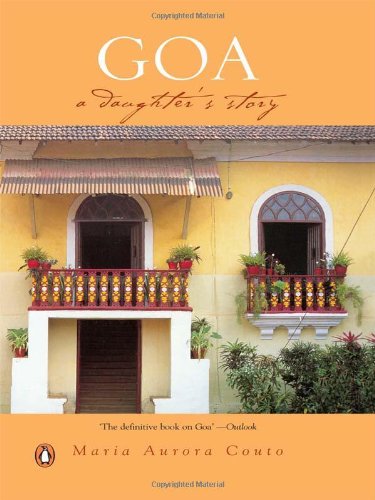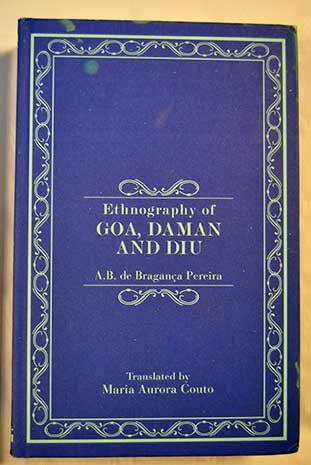Remembering Maria Aurora Couto, an Exemplary Trustee of Goan Heritage
When I visited Maria Couto at her home outside Aldona, in northern Goa, this past December, she was worried about a set of essays she hoped to have ready for publishing. She was finishing the new book by Christophe Jaffrelot, and worrying about its forecast for India. Most of all, with the 60th anniversary of liberation approaching, she was reflecting on Goa’s past and worrying about its future: the integrity of its land, water, and languages, its “goenkarponn” or cultural unity, and its “munxapon”, its unique humanism.
Maria spent none of those evenings worrying about herself, despite the physical frailty that had begun to overwhelm her. She remained a lively font of literary and cultural perspectives – gained through a life of reading and writing in English, Konkani and Portuguese – and an exemplary trustee of Goan heritage, which she came to know as both an insider and an outsider to that unique province.
Maria cemented her place as the grande dame of Goan arts and letters through her work as a memoirist, translator, and educator; her life shared with Alban Couto, a key administrator in Goa after the liberation; and her widespread friendships with writers around the state, the country and the world, most notably Graham Greene.
She died before noon on January 14, 2022, from a pneumonia infection.

'Filomena's Journeys: A Portrait of a Marriage, a Family & a Culture,' Maria Aurora Canto, Aleph, 2013
Her four books map the major contours of her life as both an insider and outsider to Goa. Born in Salcete in 1935, she was raised in Dharwad – across what was then a border between Portuguese Goa and the Bombay Presidency. Her memoir Filomena's Journeys: A Portrait of a Marriage, a Family & a Culture (Aleph: 2013) tells the story of her father, “Chico” Figueiredo, a volatile musician undermined by alcoholism and seeking a cure in prohibition-era Dharwad, and her stoical mother, Filomena Borges, who “seemed to live with and yet float above the dire realities from which she protected her young children.”
As an older child, Maria had the privilege of making solo trips over the Ghats, through customs – the earliest version of the crossings that would define her relationship with Goa. In Margao, she belonged to a class of Catholic elites, fluent in Portuguese and established in the colonial bureaucracy for generations. In Dharwad, her family struggled to maintain a middle-class life. Aurora learned stenography, hoping to work as a secretary, before a scholarship opened her path to Dharwad’s Karnatak College.
The college was in its heyday, with a faculty including the Jnanpith-awarded poet V.K. Gokak, and fellow students all steeped in Indian languages but stimulated by Western modernism. Among those students was the future novelist Shashi Deshpande, and my father, the future playwright and actor Girish Karnad. They remained close friends for the rest of their lives.
Her mother’s move to Dharwad, she later wrote, was one of the greatest gifts of her life. It was the place where she “woke to the strains of Carnatic music wafting from the neighbour’s house, rushed to morning Mass to intone Gregorian chant and in later years to listen to Hindustani classical sung…by a niece of Gangubai Hangal,” and not the place where M.M. Kalburgi could be killed at his doorstep. The Dharwar pedha, she wrote, decades later, was her Proustian madeleine.
In 1960, on a chance visit to Bombay, Maria was cajoled into attending the New Year’s Eve ball at the Bombay Catholic Gymkhana. There she met Alban Couto, a young IAS officer posted in Patna, who struck up a conversation that touched “music, literature, history and above all, a love for Goa.” The band stopped playing at 4am, but the conversation continued. They married, and her life as his companion opened up new cultural vistas, of mainstream Indian society – beginning in Patna (where Maria claimed she had to give up being called “Aurora”, since it would only be heard as “Arora”), later Madras and Delhi. Alban would serve in Bihar right through the hottest years of the JP movement, and end his time there as District Collector of Gaya. They had three children, Veena, Vinay and Vivek.

'Goa: A Daughter's Story', Maria Aurora Couto, Penguin, 2005.
Before most of that, however, came her next rendezvous with Goa: on the heels of its liberation in December of 1961. As a member of the IAS, Alban Couto had been barred from entry into Portuguese Goa for a decade. Now he was especially valuable there, as Goa transitioned from a 450-year colonial state (concluding under Salazar’s dictatorship) to a period of Indian military rule, and then to regular civil administration in 1962. Alban would be first development commissioner of liberated Goa, as well as Secretary to the Lieutenant Governor. For Maria it would be “three years of excitement and heartbreak … memorably intense and complex,” as she recorded in Goa: A Daughter’s Journey. “In freedom’s wake had come dreams and ambitions; yet for many within Goa their very sense of self seemed to be in question.”
Maria was propelled from the Hindi heartland back to her ostensible homeland, and as Alban’s companion, to the very centre of Goa’s emergent political establishment. Her own social ease, and fluency in both Konkani and Portuguese, was an equal asset to her husband’s sensitive role. Later, her experience of this tense, bristling moment would form the centrepiece of Goa: A Daughter’s Journey, her magnum opus of 2004, a memoir that is also an erudite reckoning with Goa’s sociology and colonial past.
Among many other subjects, the book confronted Goa’s history of conversion and the violence of the Portguese Inqusition, as events in her own cultural ancestry. It was a decision that not everyone appreciated – communal forces in Goa would be happy to exploit it – but one which highlighted Maria’s standards as both an intellectual and a memoirist.
The year 1963 was also when the author Graham Greene visited Goa, on assignment for the Sunday Times to report on the historic transition. Maria, who had read and grappled with Greene’s novels since college, was invited to host. Greene would write a incisive essay about a place where homes were “built with piety to last”, but would not easily withstand the pressures and appetites of India: “you cannot hang a skull at the entrance of Goa as you can on a mango tree to avert the envious eye.”
Years later, that encounter would inspire a doctoral thesis on Greene – “to get him out of my system” – and an enduring bond with the world-famous novelist, involving many letters, dinners, and a memorable set of interviews at a sea-view hotel on the French Riviera. This culminated in Maria’s first book, in 1988, Graham Greene: On the Frontier, Politics and Religion in the Novels.
By then, Maria was living in London, where Alban had a position at the Commonwealth Secretariat. Maria would come to view their journeys as a kind of fieldwork – whether at the Bankipur Club on the banks of the Ganga, in the tribal villages of the Chota Nagpur plateau, or at Harrod’s – gathering knowledge on society, writing and music, and from each new place, new perspective on home. The subtle, deliberate plural that she placed in the title of Filomena's Journeys would have an equal significance in hers.

'Ethnography Of Goa, Daman And Diu,' A.B.de Bragnanca Pereira, translated by M.A. Couto, Penguin, 2008.
In the year 2000, they moved back to Goa and settled in his ancestral village, Aldona. On this third return, in her high-raftered home, Maria’s real writing began.
She was encouraged by Alban, who was her intellectual touchstone until his death in 2009, and after. Between A Daughter’s Journey and Filomena's Journeys, Maria translated a landmark sociology of Goa, A.B. Braganza Pereira encyclopaedic Ethnography of Goa, Daman and Diu, from Portuguese into English. That labour informed her firm, unprejudiced insight into Goa’s class and land relations, faiths and traditions. In 2010, she received the Padma Shri.
Many of her early friends’ children would become her friends in turn – like myself, or the curator and poet Ranjit Hoskote. “I grew up hearing about the dazzling Maria Aurora Figueiredo, as she had then been, from my mother,” he wrote to me today. “Meeting her in person, years later, marked both a reunion and the beginning of a new friendship. Aurora was a liberal who was at home in many worlds, an accomplished cultural historian, memoirist and literary critic. She embodied the values of a confluential and transcultural Goa, and the inclusive, non-sectarian confidence of Nehruvian India.”
Her home in Aldona was a haven of old-world stylings and modern thinking, in a state and a country where those increasingly seemed to have been reversed. The hill sloped away at the back of the house, so the guests on her verandah were encircled by treetops, visited by sunbirds and in the right season, impressed by heaps of lavender flowers pouring off a Garlic Vine. In the long wake of Graham Greene, many writers, artists, scholars and eminences found a seat on that verandah, among them Damodar Mauzo, Umberto Eco, Orhan Pamuk and Katherine Boo. Many journeys into Goa ended in her company. Thanks to her writing, many journeys start there as well.
This article went live on January fourteenth, two thousand twenty two, at twenty-eight minutes past seven in the evening.The Wire is now on WhatsApp. Follow our channel for sharp analysis and opinions on the latest developments.




